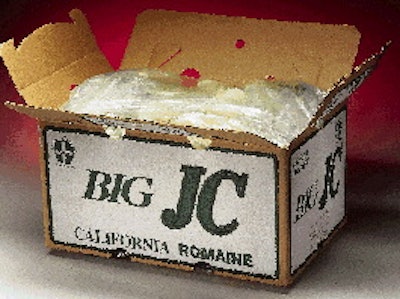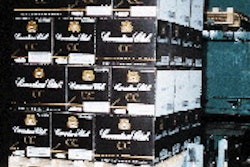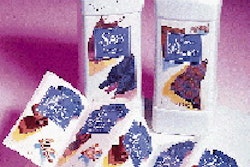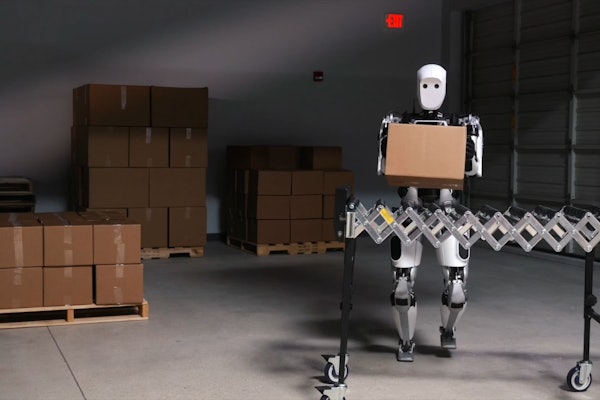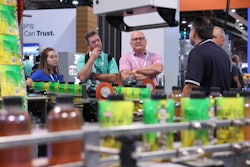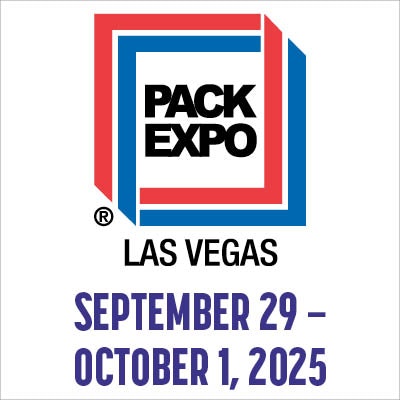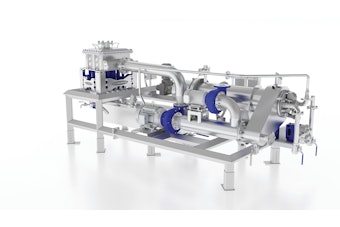Teixeira Farms, a fifth-generation, family-owned farm, understands and appreciates tradition. And what could be more traditional in the produce business than using waxed boxes for shipping fresh vegetables to retail and foodservice customers alike? For about the last 18 months, however, Teixeira (pronounced Tu-share-a) has broken with tradition, at least when it comes to romaine lettuce. Instead of waxed boxes, the grower packs romaine in a low-density polyethylene-blend bag that lines a non-waxed outer corrugated shipping case. The packing process has also changed. When romaine was packed in waxed cases, cases were placed on pallets that were showered with water and sent through a vacuum cooler. Pallet loads were topped with ice before being placed on a refrigerated truck for shipping. Now, lettuce is lightly watered in the field, packed in the bag-in-box configuration, followed by vacuum cooling. The change yields two primary advantages. First, the sales life of the lettuce is extended by about 25%. Second, material costs are reduced by about 15¢/box. Dean Teixeira, co-owner in charge of harvesting for the Santa Maria, CA, business, describes this new romaine lettuce packing process as ClimaPack(TM) from Weyerhaeuser (Seattle, WA). From a materials standpoint, it's pretty basic bag-in-box stuff. Workers put an LDPE bag in a 250#-test, C-flute corrugated shipper and load the bag with lettuce before folding the bag over the top of the lettuce and closing the flaps of the tablock case. The single-wall ClimaPack shipper is supplied by Weyerhaeuser. Cases are flexo-printed in two colors. Liner bag suppliers vary depending on price and availability. After boxes are manually palletized in the field, the process becomes interesting. Pallets are trucked from the growing fields to a nearby cooling facility that's equipped with three vacuum chambers, each holding 16 full pallets on conveyors. Inside these chambers, vacuum is used to reduce atmospheric pressure. During the process, the heat from the watered lettuce causes the water to boil and vaporize, cooling the lettuce from between 65integralF and 70integralF to about 34integralF. The process is not unlike the effect perspiration has in cooling the human body when it's hot. As the water evaporates, the relative humidity in the bag increases. The combination of cooler temperature and increased RH helps keep the lettuce fresher longer than traditional waxed-box packing. The added freshness/shelf life is therefore accomplished without requiring costly gases involved in modified-atmosphere packaging. Quality improvement "If you look at the bottom line, our decision to use ClimaPack probably saves us about 15 cents a box," says Teixeira. The previous cases were not just wax-coated, but rather saturated with wax, according to Weyerhaeuser. Saturation involves automatically sending KD, printed cases through a cascading machine where cases are literally showered with wax to the point where the wax is absorbed throughout the board, in amounts up to approximately 40% of the physical weight of the board. That's costlier than using plain corrugated. "But we didn't go into this looking at ClimaPack as a way to save money as much as we saw it as a way to improve our overall quality," he states. "It's given us, on average, about two extra days' worth of shelf life." Shelf life, he explains, depends on several factors, most notably the condition of the picked lettuce. All else being equal, he says, "If we got four or five days of shelf life with our former traditional packing method, we probably get six or seven days with ClimaPack." The extended shelf life, he feels, is largely attributable to "the use of the inner bag that slows the lettuce's rate of respiration." Improved quality and longer shelf life are important to meeting customer expectations. "We sell lettuce all across the country, but many of our customers are on the East Coast," says Teixeira. "Those customers demand quality, which is a must for making the long trip from our nearly 7ꯠ acres of land in Santa Maria and Imperial Valley, California. We ship about seventy percent to the retail market, thirty percent to foodservice. McDonald's is a big customer of ours. These customers want quality, and that's what we pride ourselves on." Customer benefits Teixeira tells Packaging World that customers didn't complain about the former waxed box, but the grower realized that it was becoming increasingly difficult for customers to dispose of the boxes. Wax-treated paper boxes cannot be recycled with unwaxed, old corrugated containers. Typically they must be discarded with other garbage, requiring customers to pay trash collectors to haul it to the landfill. Because wax is eliminated, Teixeira's corrugated boxes can be baled and processed by recyclers, which often pay for the board. Teixeira points out that the switch to ClimaPack requires a bit of customer education. Unlike some produce that can sit outside on a receiving dock for hours, romaine lettuce packed using the ClimaPack process best maintains its freshness by moving the boxes from the refrigerated truck into a refrigerated cooler as quickly as possible. "Customers have received romaine in waxed boxes topped with ice for years." he says. "Change is difficult because when these people see unwaxed cases without ice they think something is wrong. At first, we had some customers tell us they didn't think the lettuce was lasting as long as it should," but Teixeira found that in some cases, ClimaPack shipments were left outside in non-refrigerated conditions. In-field process Using ClimaPack "requires more field organization on our part," Teixeira admits. In the past, pallet loads of KD waxed boxes could be left unprotected in the field since even strong rains wouldn't damage them. Now, he says, "we keep the knocked-down ClimaPack boxes inside a truck, along with the inner plastic liner bags." On this truck, operators first erect the shipping case. Then they insert the liner bag. After romaine is picked, it's lightly sprayed with water then packed into the lined cases. Watering is important during downstream vacuum cooling as the process uses this water to remove heat rather than relying only on water in the lettuce itself, which would cause it to wilt prematurely. Twenty-four heads are packed in multiple rows in the bag. The bag is folded over but not sealed. The bagmakers pierce two small vent holes into each bag. Teixeira notes that manually adding a bag to each case adds slightly to the labor involved in using ClimaPack versus waxed boxes, but that's easily justified by the economic advantages of eliminating waxed cases, ice and using less water. The tablock cases are closed and manually palletized on a second truck that follows the packing truck. Pallet loads are delivered by truck about six miles away to a cooling plant operated by Frontier Cooling, owned by Teixeira Farms. Inside this plant are the three vacuum chambers. Dan Piester, manager of Frontier Cooling, says the rectangular steel chambers measure 10'H x 9'W x 30'L. Sixteen pallets are conveyed into each chamber. A gasketed door on either end is closed to create a hermetic seal. As pallets enter the chamber, lettuce temperature is in the 65integral to 70integralF range. For romaine, pallets are kept in the chamber for about 45 minutes. In that time, vacuum removes heat from the lettuce by reducing atmospheric pressure in the chamber. The reduction in atmospheric pressure, Piester says, removes heat so that when pallet loads are discharged from the chamber, product temperature is 34integralF. Piester says that if pallet loads of romaine were simply placed in a refrigerated cooler rather than going through the vacuum cooling process, it would take about a week for enough heat to transfer out from the cases to lower the lettuce temperature to its desired 34integralF temperature. From the vacuum chamber, pallet loads are whisked into a cooler where they're stored at temperatures just above freezing. Loads are secured in plastic strapping before they're shipped. Depending on customer orders, the product may stay in the cooler anywhere from a couple of hours to two days before refrigerated trucks deliver them to customers. "It's sometimes hard to teach an old dog new tricks, but we're finding that as customers try this method, they're learning that the lettuce looks fresher and cleaner," says Teixeira. In the near future, he concludes, "Teixeira Farms hopes to be using ClimaPack with broccoli and possibly for some of the other vegetables we grow."
